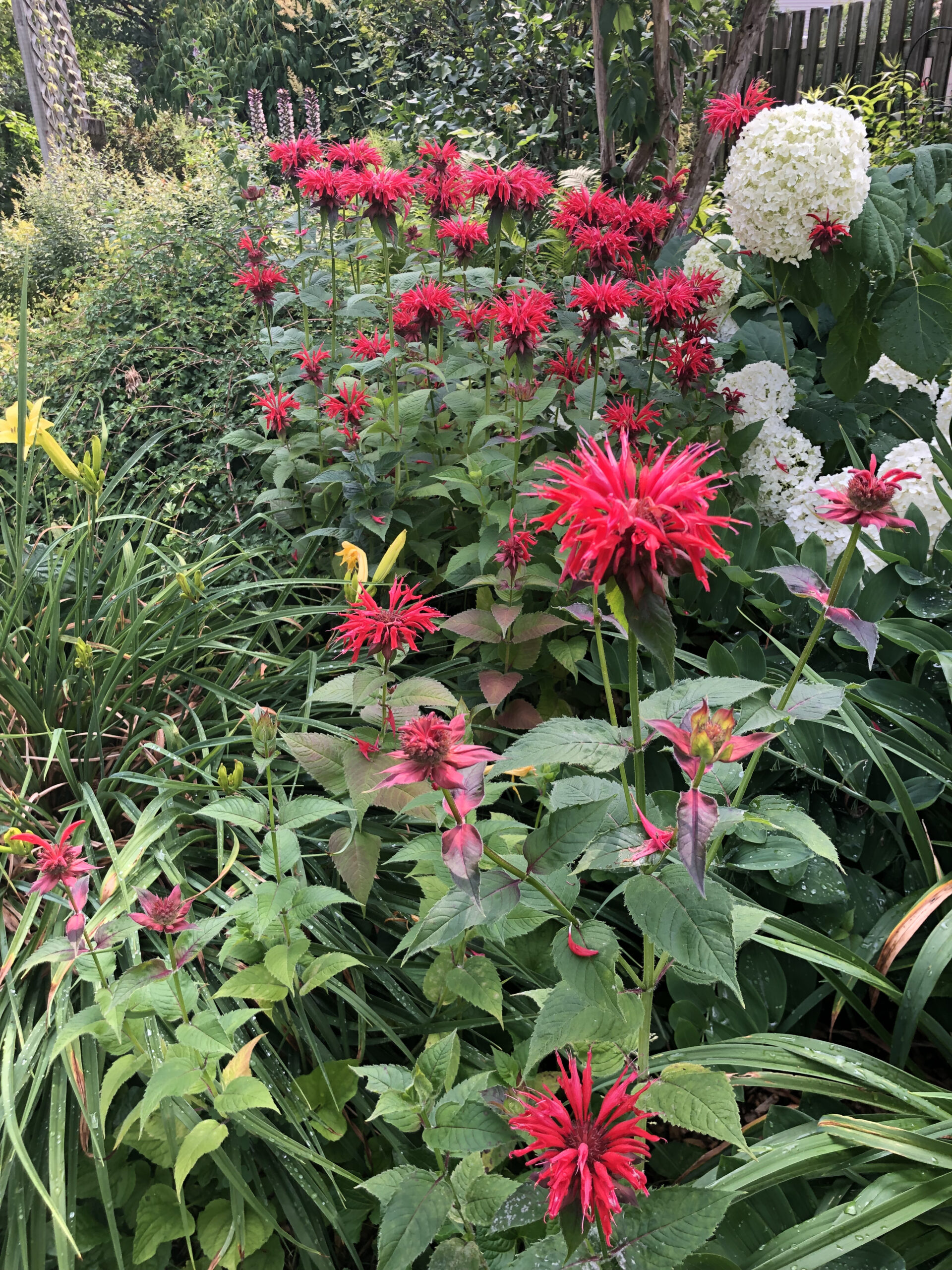The world’s ecosystems are in trouble…and that also means that we humans are at risk. Scientists have started referring to this era as the Anthropocene – because the impact of human activity dominates the planet, and that impact is detrimental to the survival of the very complex and diverse ecosystems upon which life depends.
We have initiated this program to encourage residents to participate in a fun effort – in their own yards – that will help restore our community’s biodiversity, ecological health, and beauty. The more yards that join, the more connected these healthy plots of land can be. Such “habitat connectivity” enables pollinator insects and other wildlife to move around among healthy environments in their search for food and water, mates, shelter, and places to nest.
GUIDELINES FOR REDESIGNING YOUR YARD FOR WILDLIFE
Get started rethinking your yard as you work towards registering your new and improved yard.
- Reduce your lawn area by planting a diversity of native trees, shrubs, and flowers. Start small (big works too) replacing more lawn each year. Suggested methods of doing this are here. As Doug Tallamy suggests, walkways and paths of grass can be used to define flower beds and groves of trees and shrubs. A successful pollinator habitat garden should contain primarily native species. These will become home to insects and caterpillars that are essential to species higher up the chain. Keep in mind a chickadee will need 9,000 caterpillars to raise a family of four!
- Identify native shrubs and trees you may already have in your yard. If you don’t have any keystone native shrubs or trees, we encourage you to plant one or more. Keystone species are those that host more native insect species than others, and therefore are essential to successful food webs. Oaks, birch, and cherries are among our local keystone trees. Find more regional keystone trees, shrubs, and perennials and more details here. Here’s a helpful illustrated Native Plant Finder courtesy of National Wildlife Federation
- Choose a diversity of native flowering perennials that bloom at different times. This provides pollinators with food throughout spring, summer, and fall. When choosing plants, buy those that are identified with the original species name. For example, choose coneflower — Echinacea purpurea rather than a hybrid or nativar. Insects generally prefer the native over the hybrid plant. Include one or more of these keystone herbaceous perennials — goldenrods, asters, sunflowers — since these fall-blooming plants are an important source of food for pollinators that overwinter. Visit Cornell Cooperative Extension – Monroe County: Native Plant Listings
- Read and follow Fall, Winter, Spring clean-up suggestions included in the Healthy Habitat page. Fallen leaves provide not only nutrients for the soil, but also shelter for caterpillar cocoons and pupae that overwinter in our yards. It’s important to leave that leaf litter under trees, around rocks, stumps, edges, and on the ground as your perennial native flowers die back.
- Learn to identify and remove any herbaceous and woody invasive plants in your yard. There are many beneficial native alternatives to the invasive species that have been planted or have invaded our yards.
- Do not use synthetic pesticides and fertilizers! These chemicals kill microbes that keep soil and plants healthy. They also kill insects that are important food for birds, especially in the spring. Their use is antithetical to the goals of growing a healthy and diverse ecosystem. Use organic compost and fertilizers in their place. Visit Xerces Society: Risks of Pesticides on Pollinators
GET ON THE HEALTHY YARDS MONROE COUNTY MAP
Let’s track the success of our project! If you have converted or devoted sizeable areas of your lawn or existing garden to native plantings (trees, shrubs, or perennials) or filled your patio pots with native plants according to these Guidelines, please REGISTER your healthy space. Let’s watch our habitat connection grow.
No personal data (e.g. name, exact address) will be made public.
